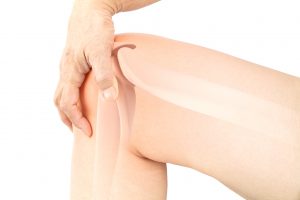
You may be more familiar with the other term for arthrosis – osteoarthritis. It is most common in older adults because cartilage wears down with age. Osteoarthritis can be a painful condition, but there are ways to reduce pain in order to increase mobility.
Causes of arthrosis
Over time, the cartilage that cushions the bones of the joint wears thin, causing bone-on-bone friction. This is what causes the pain experienced in osteoarthritis.
When cartilage gets damaged or destroyed, it cannot repair itself, so it’s important to partake in preventative measures to minimize the wear and tear of the cartilage.
Repetitive movements, insufficient physical activity levels, and being overweight are all contributing factors associated with arthrosis. These put extra stress on the joints, speeding up the wearing down of the cartilage.
Arthrosis symptoms
Pain: Pain is experienced at the specific joint affected by arthrosis. Pain will vary, depending on the amount of cartilage remaining. The less cartilage is cushioning the bones, the more pain a person will experience. Unlike other types of arthritis where pain is often experienced at night or at rest, pain in arthrosis is often experienced during the day. Touching the skin above the painful joint will cause for pain as well. Swelling, however, is not often seen in arthrosis.
Stiffness: Stiffness may be experienced at its highest upon awakening or after a long period of rest. Even though initially movement will relief stiffness, it can lead to additional pain. As the disease progresses, so does stiffness.
Joint sounds: Patients may notice a cracking or popping sound when they move their affected joint. This is a result of insufficient cartilage which is intended to ensure smooth movements between the two bones. When there is not enough of cartilage, the bones touch and rub together, causing a sound.
Hardness: Bony outgrowths can develop and may be felt through the skin. Hardness is more commonly seen in the later stages of arthrosis.
Risk factors for arthrosis
Risk factors for arthrosis include being of older age, being female, being overweight or obese, having previous joint injuries, have joint deformities, working in an occupation that involves repetitive motion, having certain genes, and having a family history of arthrosis.
Treatment for arthrosis
Treatment options include some of the following:
- Medications– prescription and over-the-counter. More severe cases require stronger medications.
- Lifestyle adjustments– diet and exercise to alleviate pressure on joints.
- Injections– corticosteroids and hyaluronic acid to reduce inflammation and increase mobility.
- Complementary therapies– physical therapy, occupational therapy, canes, braces, and other assistance devices to help with changes in abilities.
- Surgery– badly damaged joints replaced with artificial ones to decrease pain and improve mobility.
The following list offers various home remedies for easing osteoarthritis pain in the comfort of your home. The good news is, these lifestyle habits and natural remedies aren’t really associated with any unwanted side effects – unlike many medications used to treat joint pain.
- Willow bark: A 2001 study showed those taking willow bark experienced relief from knee pain.
- Tai chi: This ancient Chinese mind-body exercise is slow enough to comfortably allow you to improve strength and flexibility without promoting additional pain.
- Exercise and weight management: Being a few pounds heavier adds extra stress to the joints, causing greater pain. Regular exercise not only helps with weight loss, but also strengthens the necessary muscles to stabilize the knee.
- Hot and cold compresses: Use cold compresses to relieve swelling and hot compresses to ease muscle tension.
- Rest: It’s important to know your limit and give your knee adequate rest when you’re in too much pain.
- Elevation: Keeping the knee elevated can minimize swelling.
- Proper form: When completing exercises or lifting objects, ensure you maintain proper form and posture to avoid greater strain.
- Salvia: If you have impacted the knee but there is no inflammation, wrap salvia leaves with a cloth soaked in warm water and rub it on the knee for about 10 minutes.
- Massage therapy
- Acupuncture
- Assistive devices like a cane or walker can help you on days when your knee is particularly bad.
- Guava: Add guava slices to boiling water and allow to sit for three hours. Consume the drink once cool and infused.
- Lemon: Massage a lemon slice onto the knee to help relieve inflammation.
- Diet: Consume foods high in calcium to promote strong bones, protein-rich foods to promote strong muscles, and aloe vera in the morning to prevent knee pain later on.
Working with your doctor can help you develop an effective treatment plan for arthrosis in order for you to enjoy a normal life.